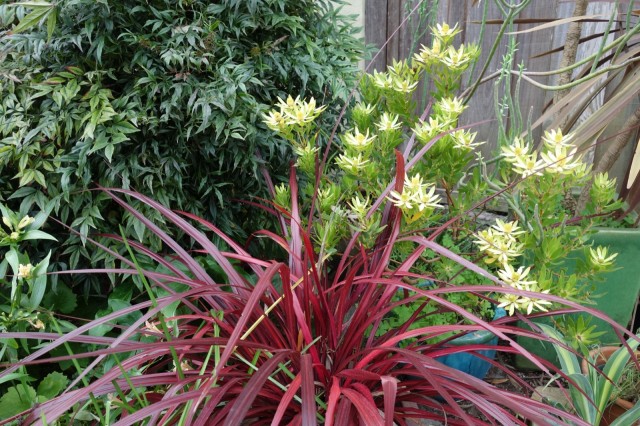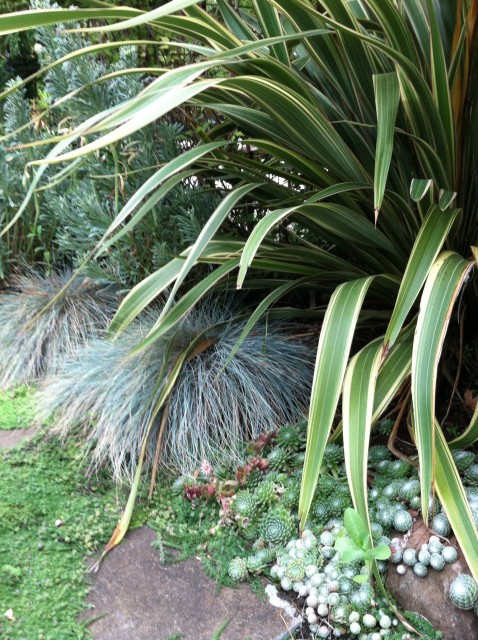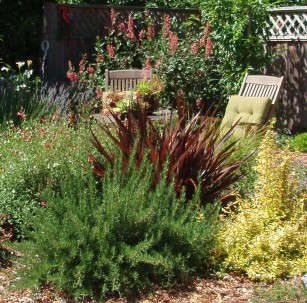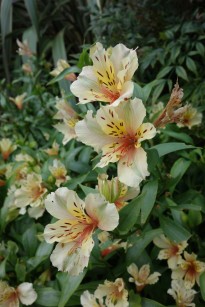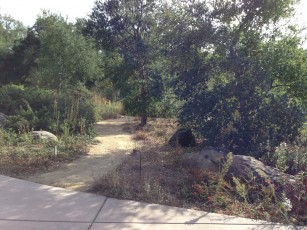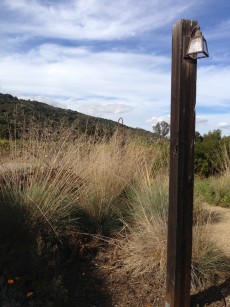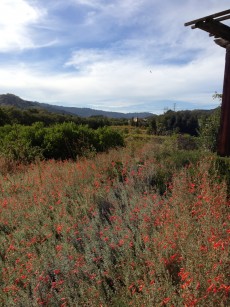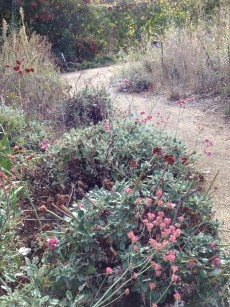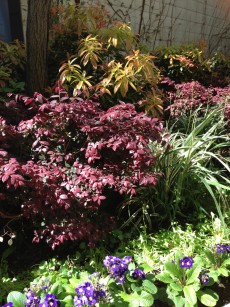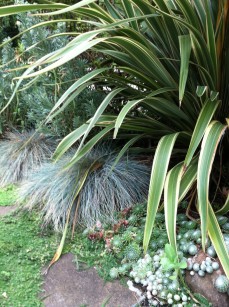If you read my column regularly or even once in a while you?ve probably heard me lament about the difficult growing conditions here in my garden. Between the sandy soil, 5 hours of intense sun but for only 6 months of the year, gophers, squirrels, moles, deer and chipmunks I?m happy if any plant thrives. So it is with pleasure that I report to you the small successes I?ve had lately and maybe give you hope that you might also grow plants that provide some color and fragrance in your garden along with attracting hummingbirds, songbirds, bees and butterflies.
As the sun shifts lower in the sky, my garden becomes shadier each day. The soil is still warm, however, and that encourages root growth so even though I won?t see much happening above ground until late next spring hope springs eternal and I am driven to plant more natives as well as other appropriate plants that will fill in those blank spots.
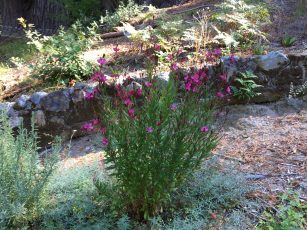
This week a clump of deep pink gaura lindheimeri is blooming like crazy. If I had my druthers I wouldn?t have planted it among a stand of orange flowering California fuchsia but it still looks great against the gray foliage of the epilobium or zauschneria or whatever it?s called now days.
Gaura ?Siskiyou Pink attracts butterflies and hummingbirds and needs only occasional water. The books will tell you gaura requires full sun but mine is thriving without a lot of sun. Don?t be afraid to try a plant you like despite what the books tell you.
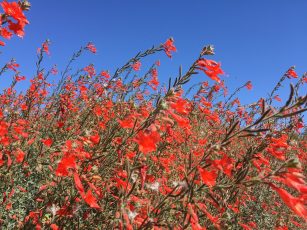
Same goes for the light requirements of the California fuchsia. Mine is happily spreading and it gets only partial sun for part of the year. Las Pilitas nursery website, a great source of information, does say they will tolerate part-shade and commonly grow where there is extra moisture in the winter and spring, gradually drying through fall. Guess that 140 inches of rainfall I got up here in Bonny Doon last winter would fall into that category. As far as the renaming of plants California fuchsia apparently is now called epilobium canum but the name zauschneria may come back so call them whatever works for you.
One of these days I want to plant a few more native plants that will tolerate shade and attract wildlife. Toyon with it?s red berries is high on my list as is Pacific wax myrtle. I have a pink flowering currant which is doing well as well as sambucus mexicana which the hummingbirds, jays and chipmunks like and a Black Lace elderberry.
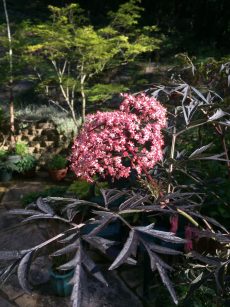
Of course, all the different ceanothus do well in partial shade, grow fast and the birds and bees love them both in bloom and now that they are full of berries and seeds. My covey of quail find the berries irresistible. Apparently porcupine like them also but fortunately for my dog, Sherman, I don?t have any of those.
California native Pacific Coast Iris, Woodland Strawberry, Heuchera maxima, Western Columbine, Bleeding Heart, Mimulus and Wild Ginger all do well in my lean, shady, sandy soil. For some reason I don?t have any any coffeberry or any Oregon Grape but they are both on my wish list. Coffeeberry is one of the best all around native plants for wildlife and mahonia or Oregon Grape bloom in the winter and provide much needed nectar for hummingbirds.
Take advantage of the fall planting season to spruce up the problem spots in your shady garden. Email me at janis001@aol.com if you would like more suggestions.


